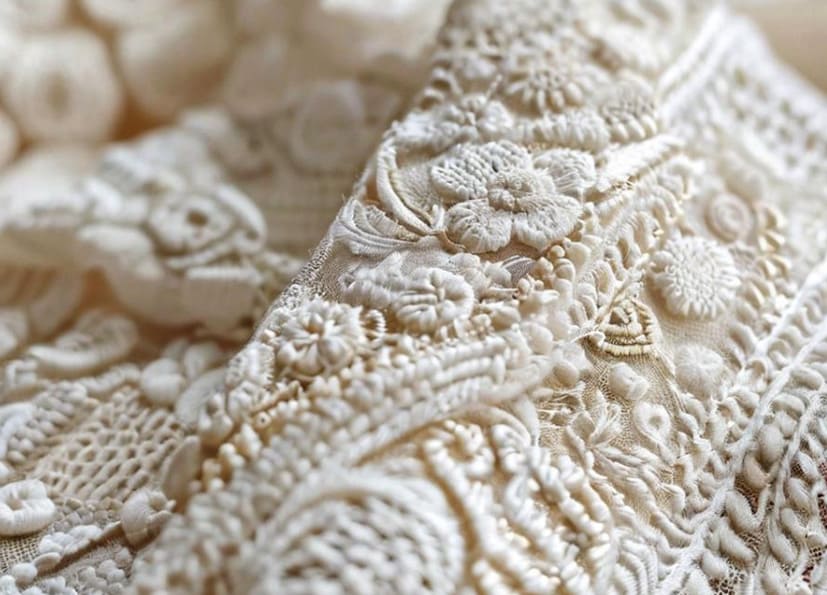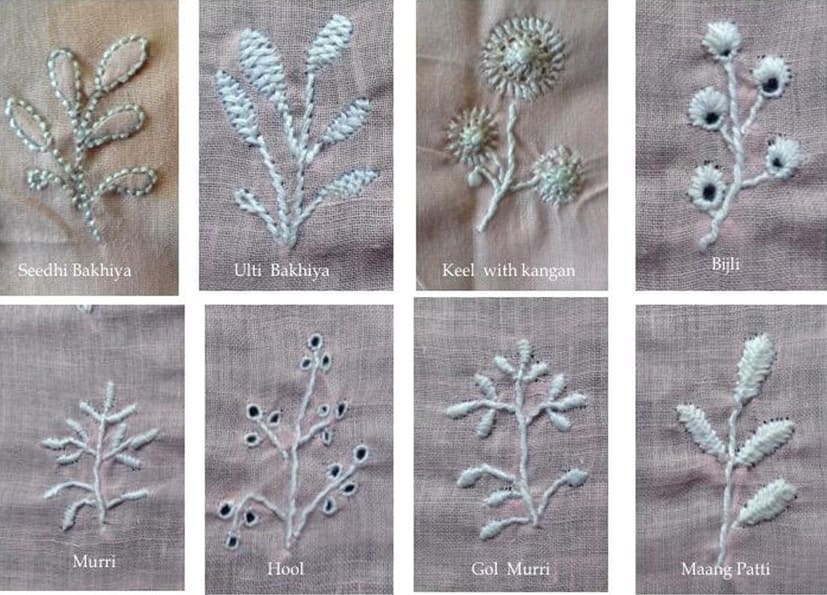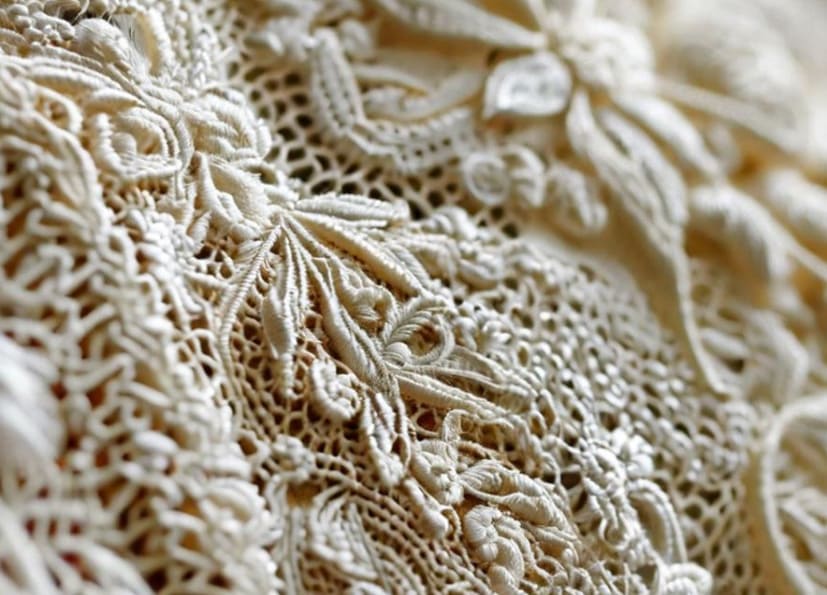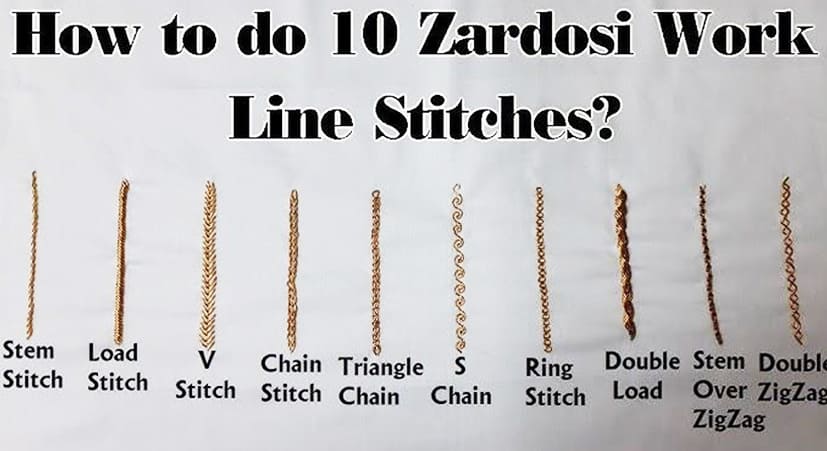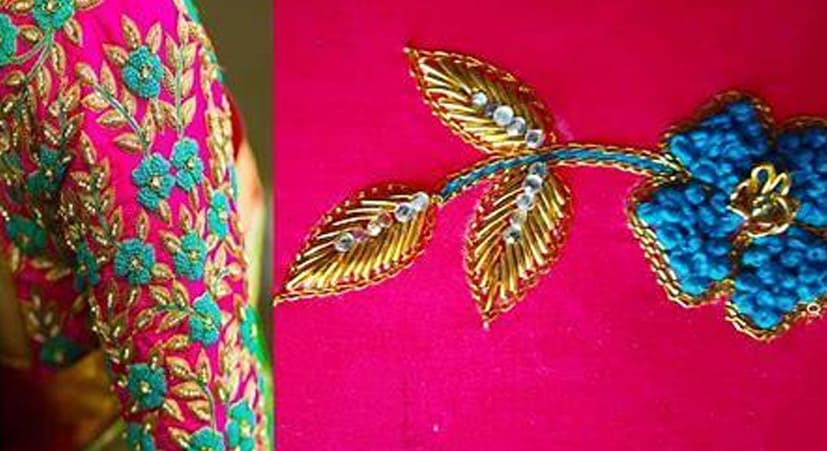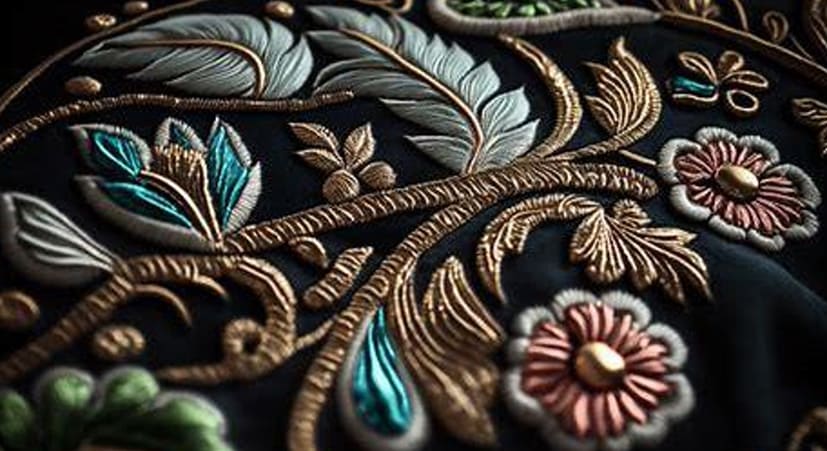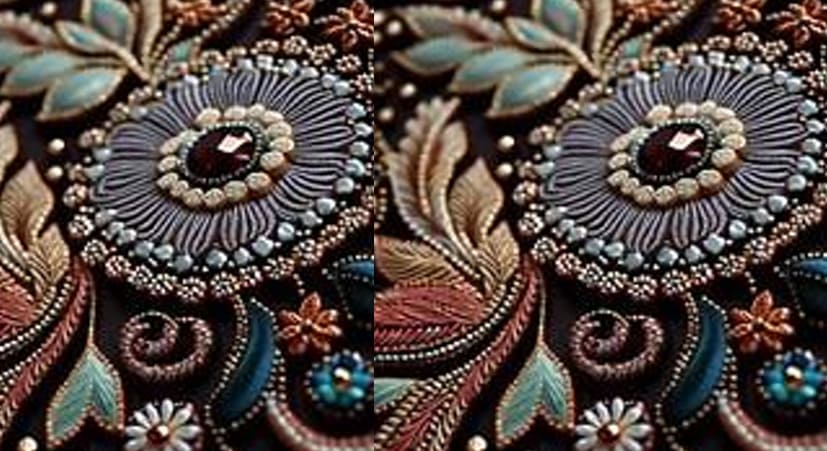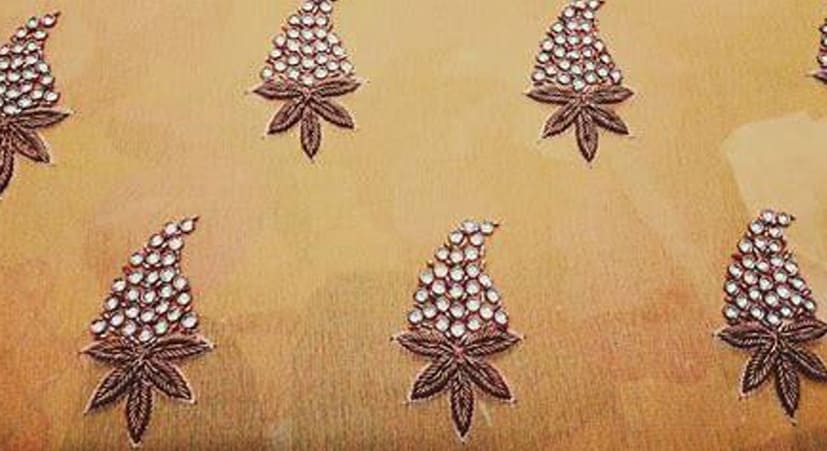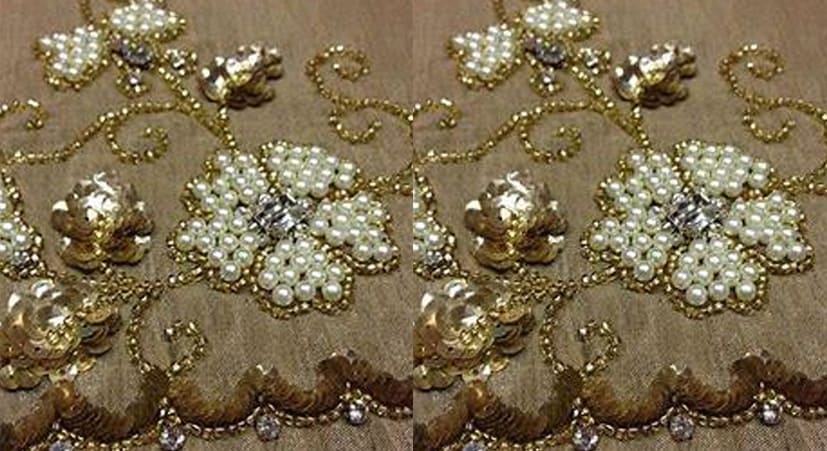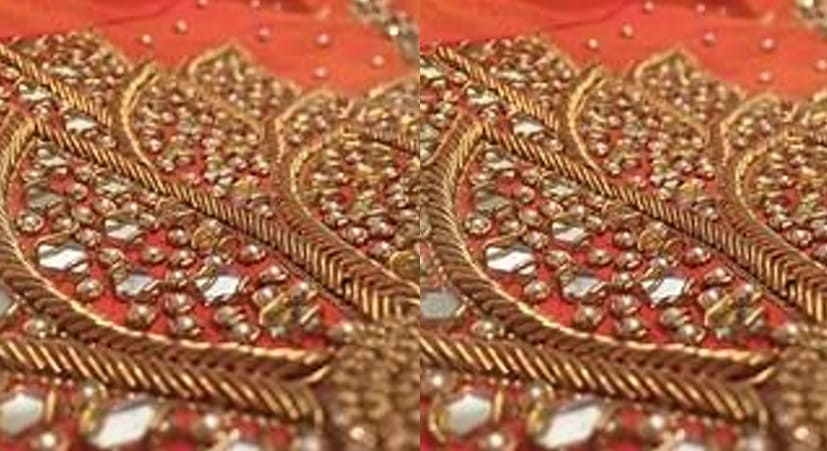Characteristics of Zardozi
Materials: Zardozi uses metallic threads, including gold, silver, and copper, which
are often combined with silk threads. The embroidery can also incorporate beads,
sequins, pearls, and gemstones to enhance its richness and texture.
Techniques: The technique involves stitching with a needle and metallic thread to
create elaborate patterns and motifs. The designs are often inspired by nature,
including floral patterns, paisleys, and intricate geometric shapes.
Zardozi embroidery is renowned for its elaborate and luxurious designs, often
featuring metallic threads and embellishments. Here’s a detailed look at some of the
key stitches used in Zardozi embroidery, each contributing to the intricate and opulent
nature of the craft:
1.
Satin Stitch- Satin Stitch is a fundamental embroidery stitch used in Zardozi to
create solid, smooth surfaces.
3.
Couching- Couching involves laying down a thread or metallic cord on the
fabric and securing it with smaller stitches. Couching is used to create bold
lines and shapes, and to add texture and dimension to the embroidery. It is
ideal for outlining designs and creating intricate patterns with metallic threads.
3.
Chain Stitch-Chain Stitch is a decorative stitch that forms a series of
interlocking loops. In Zardozi, it can be used to create detailed outlines and
textured effects.
4.
French Knot (Phanda)-French Knot, or Phanda in Zardozi, is a raised stitch
that adds a three-dimensional effect. The size and prominence of the knot
depend on the number of wraps. French Knots are used to add texture and
detail, such as creating flower centers, embellishments, or intricate patterns.
They provide a tactile quality to the embroidery.
5.
Kundanj Work-Kundanj Work involves setting decorative elements, like
stones or gems, into the embroidery. It is commonly used in bridal and
ceremonial garments to create striking, luxurious effects.
6.
Pittan Work-Pittan-Pittans are small pieces of metal that are sewn onto the
fabric, often in decorative patterns. The surrounding area is embroidered to
enhance the overall effect.
7.
Kashmiri Stitch- This stitch involves creating delicate designs with a
combination of metallic and silk threads. It often includes elements like floral
motifs and paisley patterns. Kashmiri Stitch is used for creating highly
detailed and refined embroidery, adding elegance and sophistication to the
design.
8.
Beadwork- Beads are sewn onto the fabric alongside metallic threads in
patterns or clusters. They can be used to enhance specific areas or create
decorative elements
9.
Sequins-Sequins are small, shiny discs used to add a reflective quality to the
embroidery. Sequins are sewn onto the fabric in various patterns or scattered
arrangements. They can be combined with metallic threads and other
embellishments for added effect. Sequins enhance the visual appeal of the
embroidery by adding sparkle and shine, ideal for festive and celebratory
attire.
10.
Zardozi Stitch- This stitch can include techniques like satin stitching with
metallic threads, couching metallic cords, or creating detailed patterns with
thread. The Zardozi Stitch is used to cover large areas or create bold patterns,
contributing to the rich and textured appearance of the embroidery.
Each of these stitches contributes to the opulence and intricacy of Zardozi
embroidery, showcasing its luxurious and detailed craftsmanship. The
combination of metallic threads, beads, sequins, and elaborate stitching
techniques results in rich, textured designs that are highly valued in traditional
and high-fashion garments.


